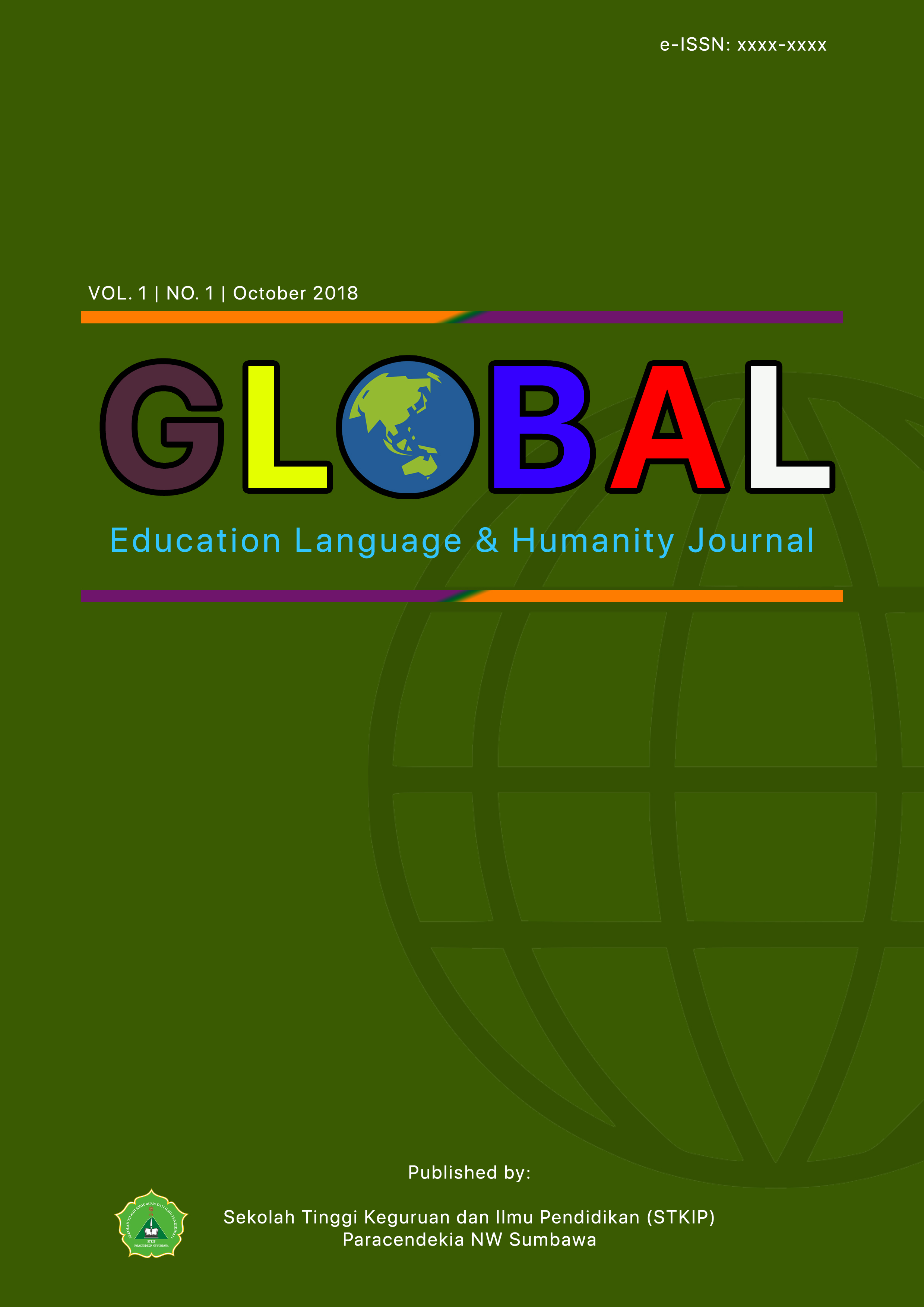AN ANALYSIS OF ENGLISH CLASSROOM INTERACTION USING FLANDER INTERACTION ANALYSIS CATEGORIES SYSTEM (FIACS) TECHNIQUE
Keywords:
Classroom Interaction, FIACS, Teacher Talk, Student Talk.Abstract
The purpose of this study was to determine the percentage of teacher and student talk time and to determine the characteristics of teachers and students during class interaction at SMAN 1 Lunyuk in the 2017/2018 academic year. The design of this study is a mixed method, using descriptive qualitative and quantitative descriptive methods or a combination of qualitative and quantitative methods. Qualitative methods were used to analyze data using Flander's theory and quantitative methods were used to determine the percentage of teacher and student talk time using the Flanders formula. Subjects numbered 30 students with 12 girls and 18 boys. The research data were analyzed by observation, recording, transcripts, coding, then the data were analyzed using the Flanders formula. The results show that asking is the most frequently used by speaking teachers. The percentage of teacher talk is (56.0%) and the percentage of student talk is (33.9%), while the percentage is silent/confused is 10.1%. This shows that teacher talk is the most dominant class interaction during observation. From these results, the researcher concluded that the interaction during the teaching and learning process involved teachers and students and the percentage of teacher and student talk time in class interaction was almost balanced and students were quite active in English class interactions.
References
Arockiasamy, S. (2017). Innovation In Educational, B.Ed. Study Material: Flander’s Interaction Analysis Categories System (FIACS). Yogyakarta. Innovations in Education, B.Ed. Study Material.
Chika, OP. (2012). The Extent Of Students’ Responses In The Classroom. International Journal of Academic Research in Business and Social Sciences. University of Port Harcourt.
Farokhipour, S. (2015). Raising Awareness On Teacher Talk Strategies: A Study Of Iranian Context. International Journal of Language Learning and Applied Linguistics World (IJLLALW). Iran. Yasuj University.
Gablinske, PB. (2014). A Case Study of Student And Teacher relationship And The Effect On Student Learning. I Doctoral Dissertation. SUniversity of Rhode Island.
N
Goronga, P. (2013). The Nature And Quality Of Classroon Verbal Interaction: Implications For Primary School Teachers In Zimbabwe. Educational Foundations Department. University of Zimbabwe.
Hai and Bee, LS. (2006). The Effectiveness of Interaction Analysis Feedback On The Verbal Bahaviour Of Primary School Mathematics Teachers. Jurnal Pendidik dan Pendidikan. Brunei Darussalam University.
Ibrahim, M. (2012). Classroom Interaction In Second Language Teaching And Learning In The Vocational Education Development Centre (VEDC). Dissertation Project. The British University In Dubai.
Javid, S. (2013). A Study On The State Of Teacher-Student Verbal Interactions During Teaching Process And Its Relationship With Academic Achievement Of Middle School Students In Ardabil. International Research Journal Of Applied and Basic Sciences ISSN 2251-838X Vol. 4(7): 1909-1913. Science Explorer Publications.
Marbun, EP. (2017). Classroom Interaction In English Through Flander’s Interaction Analysis Categories System At The Eleventh Grade Of Vocational School Mandiri. Final Project. Medan: Universitas Negeri Medan.
Primadani, A. (2014). The Impact Of Teacher Talk Toward Students’ Participation. Final Project. Jakarta. Universitas Pendidikan Indonesia
Putri, FG. (2014). An Analysis Of Classroom Iinteraction By Using Flander Interaction Analysis Categories System (FIACS) Technique At SMPN 13 Kota Bengkulu In 2013/2014 Academic Year. Final Project. Bengkulu: University Of Bengkulu.
Raj, J. ( 2012). Effectiveness Of Interaction Analysis Observation System Toward Modification Of Teacher’s Behaviour. Voice of Research (Journal). New Delhi. Chudela University.
Septiningtyas, M. (2016). A Study Of Interaction In Teaching English To Young Learner (TEYL) Classroom Using Flander Interaction Analysis System. Yogyakarta: Sanata Dharma University Yogyakarta.
Sowell, H. (2013). Classroom Management Strategies: The Impact On Student Achievement. Dissertation Project. England. Liberty University
Tiwary and Pandey, A. (2014). A Study Of Teacher Influence In The Classes Of Primary School Teachers Vis-A-Vis Emotional Intelligence and Demographic Variables. New Delhi. India. Half Yearly Journal of Educationla Research.
Usendia, A. (2015). Verbal Interaction Patterns and Junior Secondary Students’ Achievement In Basic Science and Technology In Uyo, Akwa Ibom Nigeria. International Journal of Innovative Social & Science Education Research. Nigeria. University of Uyo.









